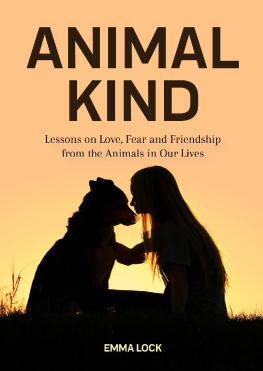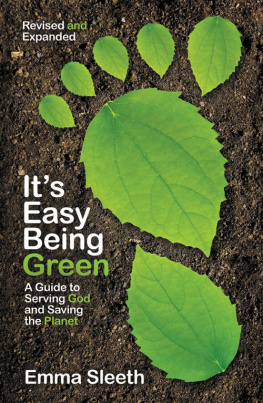
The rundown on biodiversity
Not to be dramatic, but everything is ruined if we dont have a biodiverse planet. Without a wide and unique range of different plant and animal species, ecosystems will collapse. Right now, were in a biodiversity crisis. Were seriously lacking. Today, according to the UN, about one million species are threatened with extinction.
We are living in what many scientists refer to as the Anthropocene Epoch, the period of time in which one species, Homo sapiens, has evolved into a threat to the lives of the majority of all others. There have been periods of mass extinction before; in fact, this is the sixth one that we know of. We all know about when dinosaurs became extinct, and even though that extinction period wasnt the largest that was the one at the end of the Permian era its hard to fathom that what our society is doing to the planet, and to all those animals and plants living on it, could be categorically similar to the wiping out of the dinosaurs. And yet this is exactly what we are doing.
According to the study Accelerated modern humaninduced species losses: Entering the sixth mass extinction, species are becoming extinct at a rate significantly faster than that which has been recorded for the past millions of years before. Sixty per cent of primate species are threatened with extinction because of one primate species us. We are just 0.01% of life here, yet since the 1970s, weve wiped out 60 per cent of all animal populations, according to a major report by WWF. Another study, led by Professor Ron Milo, found that weve caused the loss of 83 per cent of all mammals. If we look at the IUCN Red List of Threatened Species, we can see that weve already killed off a Great Barrier Reef island residing rodent named Bramble Cay melomys, the Pinta Giant tortoise, the Mexican Dace ray-finned fish, the Christmas Island pipistrelle bat, the Splendid poison frog, the Saudi gazelle, and the Kauai honeyeater bird, to name a few.
This biological annihilation is not due to ancient climatic patterns, to chance, or to anything other than our actions. The amount of greenhouse gases we have released into the atmosphere, the number of trees we have cut down and land we have cleared all play a part. A significant and not to be overlooked cause of this is our exploitation of animals, largely for food and fashion.
Biodiversity loss and the animal industrial complex
The animal industrial complex the system that breeds, grows and transforms animals into food, furniture and fashion has a lot to do with biodiversity loss. Professor Milos report found that of all mammals left in the world today, 60 per cent are those referred to as livestock farmed, commodified animals like cattle, pigs and sheep. After farmed animals and humans, only four per cent of mammals left on Earth are those who are wild and free. Tigers, elephants, koalas, chimps, wombats, bears theyre all in that four per cent.
Farmed chickens, who largely spend their lives in rows of cages or stuffed into crowded sheds, make up 70 per cent of all birds in the world. For every cockatoo, crow, crimson rosella, crowned eagle or other free bird you see, theres an absurd amount of chickens you dont except, perhaps, when theyre sitting on your plate.
A big part of the problem here is that the billions of animals we farm and kill need somewhere to stand and food to eat while theyre living. Half of all habitable land so forget glaciers and barren land is used for agriculture, and of this land, 77 per cent is used for grazing animals for slaughter, factory farms and crops grown to feed these animals.
This system leaves little space left for nature. Yales Global Forest Atlas states that the ranching of cattle for beef and leather, for example, is responsible for 80 per cent of the deforestation and destruction of the Amazon Rainforest the lungs of the Earth. This deforestation increases further if you include the soy production linked to it, which predominantly goes to feeding factory-farmed animals, including farmed fish and pigs, and cattle in feedlots around the world. Soy milk in your coffee wont seriously hurt the world inefficient animal agriculture does.
Greenhouse gas emissions
Theyre the most talked about piece of the climate crisis puzzle, and farmed animals belch and pass them. Greenhouse gases, which are warming the planet, are significant in the animal industrial complex.
Before we get to the belching, though, lets talk more about land clearing, degradation and deforestation. World Resources Institute data tells us that in 2019 we lost a football pitch of untouched, pristine forest every six seconds. Government data shows that 54 per cent of Australian land use is for animal grazing alone. Sixty-three per cent of European arable land is used for animal agriculture and 85 per cent of the UKs agricultural land is tied to the rearing of animals. In the US, 41 per cent of land use in the contiguous states is related to animal agriculture. Thats an awful lot of the world being eaten up.
This doesnt just seriously impact biodiversity, but our climate through carbon emissions, too. Trees are priceless. They provide us all with breathable air, they provide homes to many animals and they help entire ecosystems flourish, while sequestering pulling in and securely storing carbon from the atmosphere. They are over one-third carbon and have the ability to turn carbon into oxygen through photosynthesis. When we cut them down, the carbon stored inside them is released into the atmosphere, causing temperatures to rise further. If we want to stick to the Paris Agreement, which aims to combat the climate crisis by ensuring our emissions reduce, we need to stop cutting down so many trees. To prevent a global temperature rise, we need to both dramatically reduce our emissions going forward, and remove greenhouse gases from the atmosphere today. Sequestration helps with removal and its for this reason we must protect our forests.
But what can we do to reduce our emissions? This can be a daunting question, considering that, based on Oxfam reporting, the richest one per cent of the world are responsible for over double the carbon pollution of the poorest 50 per cent, and just a handful of companies are massively responsible for such a large amount of global emissions. It can make us feel helpless when governments around the world continue to prioritise short-term economic growth rather than building a more secure, sustainable society.
But we do have power. The Food and Agriculture Organization (FAO) of the UN produced a report called Livestocks Long Shadow stating that the greenhouse gas emissions relating to the animal agricultural sector are more significant than the emissions which come from all transport fuel exhaust. Think of every car in peak hour traffic, every ship, every truck, every plane in the sky burning fossil fuels. This is a hugely significant and confronting statistic because it means there are serious changes we billions of us can make, in the way we eat and dress, to do our part within an enormous movement for sustainability and regeneration. It also means we know what industries need to be held to account.
EXPLAINER
Whats unnatural about sheep grazing meadows?
Theres an argument that free-range farming, or the consumption of animals who are not factory-farmed, is more eco-friendly. Nitrogen and phosphorus released through the manure of factory-farmed animals like chickens, pigs and even fish can end up in waterways and cause eutrophication. This can lead to dead zones where near no marine life can survive.
Terrible as this is, free-range farming is not the solution, and often means more land eaten up for grazing. Animal farming always requires more land than plant-based farming, but why should we care about land being cleared if grass still gets to grow there? The reality is that rolling green pastures are unnatural. In fact, such landscapes are in a state of arrested development, says Dr Helen Harwatt. They are unchanging, not sprouting new shoots of life, or offering animals refuge. Nitrogen fertiliser is often put onto this land to keep it the way it is, and the hooves of non-native farmed animals erode the soil. Its because of these impacts that the widespread roaming of farmed sheep for wool and meat in Patagonia Park nearly saw its desertification, and the grasslands of Mongolia are at risk of vanishing due to the rising cashmere production.
Next page








